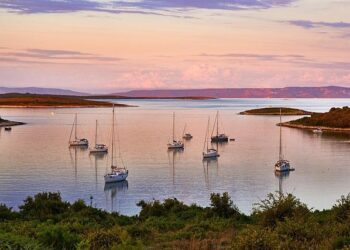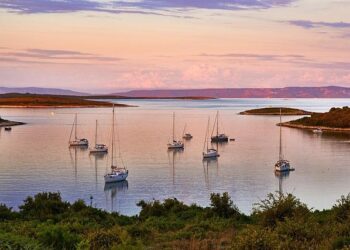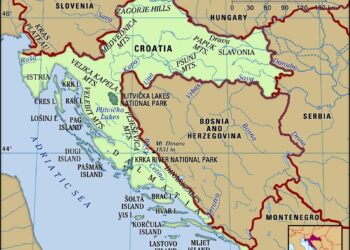Spain, Greece, Italy, France, Croatia, Portugal, and Turkey continue to dominate the European travel landscape, expertly balancing the enduring allure of mainstream tourism with the growing enthusiasm for unconventional escapes. As global travelers seek both iconic cultural experiences and off-the-beaten-path adventures, these diverse destinations are evolving to meet shifting preferences-offering a blend of well-known landmarks alongside emerging, lesser-explored locales. This dynamic equilibrium highlights how traditional appeal and innovative tourism trends coexist, shaping the future of European travel in an increasingly competitive market.
Spain and Greece Redefine Travel with Authentic Local Experiences Beyond Popular Destinations
In recent years, Spain and Greece have taken proactive steps to shift the narrative around their travel offerings, emphasizing immersive cultural experiences over traditional sightseeing hotspots. From the vibrant street art scenes in Valencia and Athens to farm-to-table culinary tours in Andalusia and Crete, visitors are invited to engage with the authentic heartbeat of these countries. Small villages, often overlooked on popular itineraries, are blossoming as hubs for artisanal crafts, local festivals, and age-old traditions, presenting tourists with an intimate glimpse into Mediterranean life away from crowded landmarks.
Travelers eager to move beyond the beaten path can explore a rich variety of activities, including:
- Participating in olive harvests with local farmers in southern Spain
- Joining traditional Greek dancing workshops in mountain villages
- Exploring hidden coastal paths that connect remote fishing communities
| Destination | Unconventional Experience | Highlight |
|---|---|---|
| Spain (Andalusia) | Flamenco workshops in Jerez de la Frontera | Dance with locals, authentic rhythms |
| Greece (Peloponnese) | Olive oil production tours | Hands-on traditional pressing methods |
| Spain (Basque Country) | Basque cider house visits | Sampling cider & local gastronomy |
| Greece (Naxos) | Pottery workshops with island artisans | Crafting and storytelling combined |
Italy and France Embrace Sustainable Tourism Strategies to Preserve Cultural Heritage Amid Growing Visitor Numbers
Italy and France have both intensified their efforts to implement sustainable tourism initiatives aimed at safeguarding their rich cultural heritage from the pressures of increasing tourist activity. Recognizing that unchecked visitor influx can strain historic sites and local ecosystems, these nations are pioneering measures that balance economic benefits with preservation priorities. This includes promoting off-peak travel, enhancing visitor education on responsible tourism practices, and investing in infrastructure that minimizes environmental footprints. Key cities such as Rome and Paris have also introduced digital visitor caps and timed entry systems to prevent overcrowding in iconic landmarks.
Strategic collaboration between government bodies, local communities, and tourism operators has led to innovative approaches that blend tradition with modern sustainability goals. Examples include:
- Community-led tours that highlight lesser-known cultural gems
- Eco-friendly accommodation initiatives focused on heritage site proximity
- Restoration projects funded through tourism fees reinvested into conservation
These efforts are coupled with robust monitoring systems, ensuring that visitor experiences do not compromise the integrity of cultural landscapes. The table below outlines key sustainable tourism indicators tracked by Italy and France in their top heritage destinations:
| Indicator | Italy | France |
|---|---|---|
| Visitor Capacity Limits | 20 million annually | 15 million annually |
| Eco-friendly Accommodation Rate | 45% | 50% |
| Heritage Site Restoration Funding (ﻗ؛ million) | 120 | 135 |
| Community Tourism Programs | 75 active | 82 active |
Croatia Portugal and Turkey Offer Hidden Gems Catering to Adventurous Travelers Seeking Off-the-Beaten-Path Escapes
Croatia, Portugal, and Turkey are rapidly emerging as hotspots for travelers hungry for authentic, less-crowded experiences. In Croatia, beyond the well-trodden charm of Dubrovnik and Split lies the enchanting region of Gorski Kotar, a lush mountainous area perfect for hiking, wildlife spotting, and discovering pristine natural beauty. Meanwhile, Portugal’s Alentejo coast captivates with its rugged cliffs, secluded beaches, and artisanal villages untouched by mass tourism. Turkey’s eastern provinces, including Van and Mardin, invite visitors to delve into rich cultural tapestries and ancient architecture far from the usual Istanbul and Cappadocia circuits, offering a unique blend of history and untouched landscapes.
These destinations share a commitment to sustainable travel and local community engagement, providing varied options for adventurous visitors seeking genuine connection rather than overcrowded attractions. Highlights include:
- Croatia: Kayaking through the lesser-known Kornati archipelago
- Portugal: Exploring the storied cork oak forests and quiet vineyards of Alentejo
- Turkey: Trekking ancient trade routes near Mount Ararat and visiting remote monasteries
| Country | Hidden Gem | Main Activity | Best Season |
|---|---|---|---|
| Croatia | Gorski Kotar | Hiking & Wildlife | Spring & Fall |
| Portugal | Alentejo Coast | Beach Exploration & Wine Tasting | Summer |
| Turkey | Mardin | Cultural Tours & Ancient Sites | Autumn |
Concluding Remarks
As Europe continues to welcome millions of travelers each year, countries like Spain, Greece, Italy, France, Croatia, Portugal, and Turkey are exemplifying how mainstream tourism can coexist with the growing demand for unconventional experiences. By promoting lesser-known destinations alongside iconic landmarks, these nations are successfully catering to diverse traveler preferences while fostering sustainable tourism practices. This delicate balance not only enhances visitor satisfaction but also helps preserve cultural heritage and natural landscapes for future generations. As the travel industry evolves, these European hotspots illustrate the dynamic ways in which tradition and innovation intersect to shape the future of tourism.
















